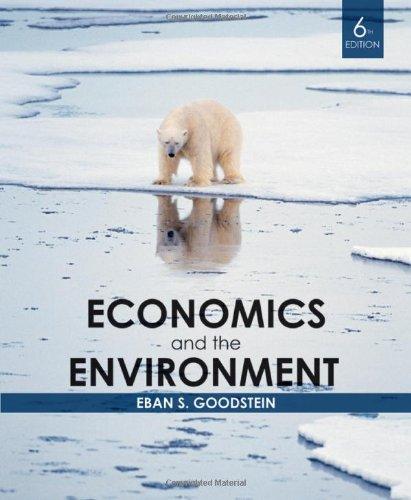Noncompliance with auto emission limits is fairly widespread; as I noted in the text, some 69% of
Question:
Noncompliance with auto emission limits is fairly widespread; as I noted in the text, some 69% of test facilities passed cars that were designed to fail. In a review of the issues faced, Harrington and McConnell (1993) cited faulty testing equipment, exemptions in some states for old (and highly polluting) cars, and poor enforcement.
The response of the EPA and Congress to this situation has been to call for improved testing equipment, to restrict exemptions, and to centralize the testing procedure in state-run centers rather than have the tests done in gas stations. While the last step should improve compliance by testers, it also increases costs to consumers, who will now have to travel farther to get tested.
Figure 15.5 provides Harrington and McConnell’s estimates of the marginal costs of reducing volatile organic compounds (VOCs), based on three types of testing equipment the EPA may require. (VOCs are chemical compounds that contribute to ozone pollution or smog.)
The 2500 idle test is the current technology that measures emissions only at the tailpipe; the pressure and purge tests pick up currently unmeasured VOCs that escape from the car’s emission-recycling system. The IM240 test is a more effective (and expensive) version of the 2500 idle test of tailpipe emissions and has been proposed as a replacement.
1. The horizontal axis measures tons of emission reduction per thousand cars inspected. How much extra per ton does it cost to increase emission reductions from about 2.7 tons (achieved with the 2500 idle test) to about 4.9 tons (with a pressure test added)? Does the graph indicate that it is actually cheaper for testing centers to have both a 2500 idle and a pressure test available, rather than just a 2500 idle test?

2. Up to the point where the purge system is installed, theMC of reduction curve slopes downward. Is this the usual shape for an MC of reduction curve? (Refer to Chapter 4.) If not, can you tell a story about technological progress and compliance rates that might explain the downward slope?
3. How much extra does it cost per ton of VOCs reduced to go from an emission reduction of about 8.2 (with the 2500, pressure, and purge tests) to about 8.7 (with the pressure and purge tests, and the IM240 replacing the 2500)? What does this say about the relative importance of VOC emissions from the tailpipe versus the recycling system? Does this mean that, from an efficiency point of view, the IM240 test is a bad idea?
Step by Step Answer:






